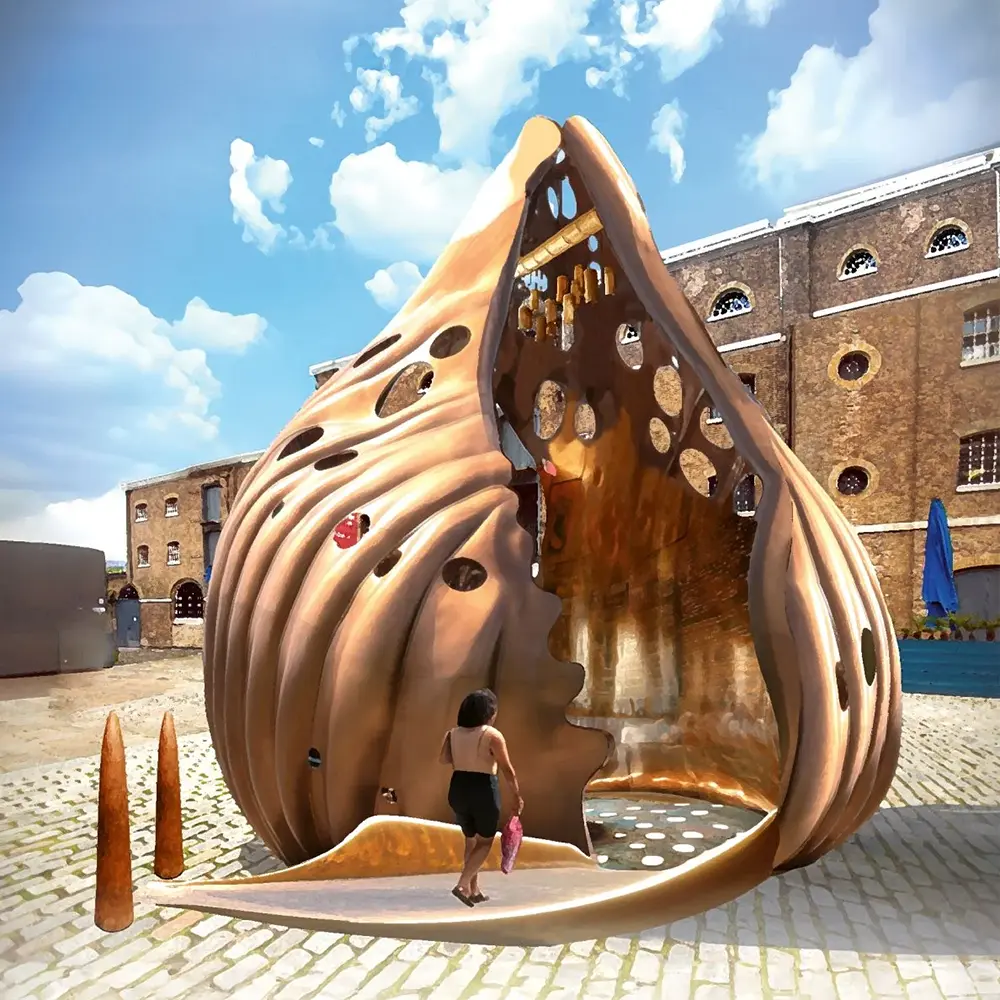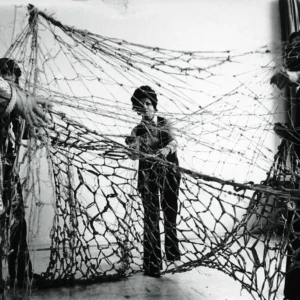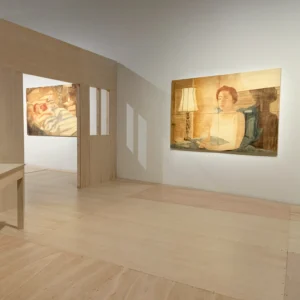London has unveiled its first memorial to the victims of transatlantic slavery, designed by interdisciplinary artist and activist Khaleb Brooks. “The Wake,” a 7-meter-high bronze cowrie shell sculpture, will be installed on the banks of the River Thames in East London, demonstrating the history of the transatlantic slave trade and the resilience of its victims.
“The Wake” was chosen after a public consultation process organized by Sadiq Khan, Mayor of London, and supported by the London Assembly. With the goal of building a memorial that would honor the millions of lives lost and educate the public about the long-lasting effects of the transatlantic slave trade, the competition received proposals from a broad range of artists. In the end, Brooks’ design was selected because of its rich symbolic meanings and ability to provoke thought and discussion.
The cowrie shell, central to Brooks’ design, carries deep historical significance. In West Africa, it once served as currency and became tragically linked to the transatlantic slave trade, where it was exchanged for human lives. Brooks’ sculpture reclaims this symbol, transforming it into a monument that honors African cultural identity and strength. The shell’s design also symbolizes awakening and consciousness, prompting viewers to confront the brutal realities of slavery and its enduring impact on society.
The public artwork will be installed in 2026 in West India Quay in London Docklands. The location was once a hub of international trade and housed huge warehouses where sugar from Britain’s colonies in the Caribbean and North America was stored.
Along with the public installation, satellite artworks of human-sized cowrie shells will be positioned around the city, serving as public seating and adding to the social landscape. Communities will have the chance to interact with the works by decorating the shells. There will also be artist-led workshops, readings, performances and live music as part of a greater program throughout the year.
“The Wake” has garnered widespread acclaim from cultural leaders and historians, emerging as a pivotal work in the global dialogue on public monuments and collective memory. As a significant moment in London’s cultural narrative, this memorial highlights the city’s commitment to confronting its history. It serves both as a reminder of past injustices and as a focal point for education and reflection, fostering future healing and reconciliation while calling for a more just and equitable society.





